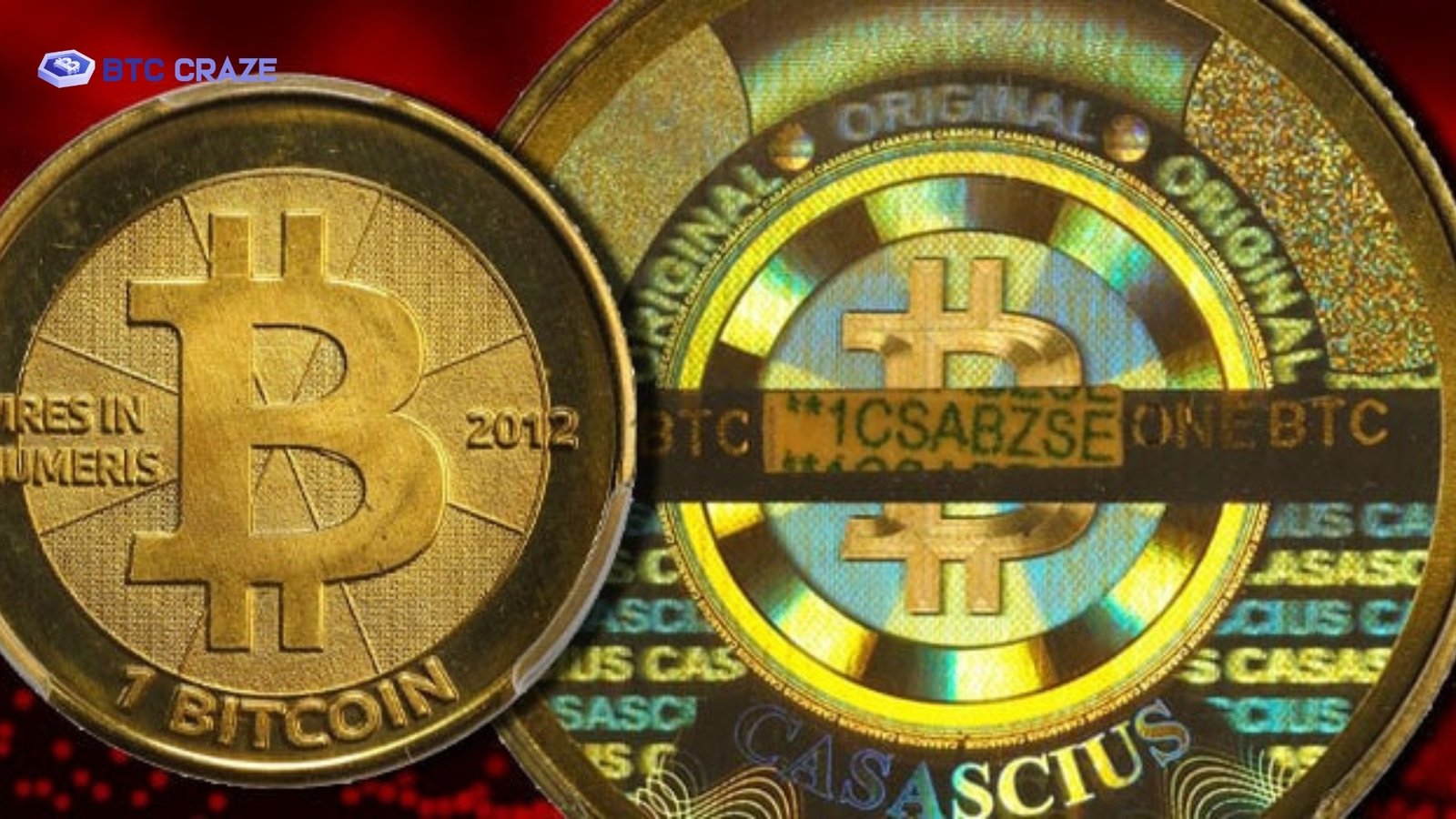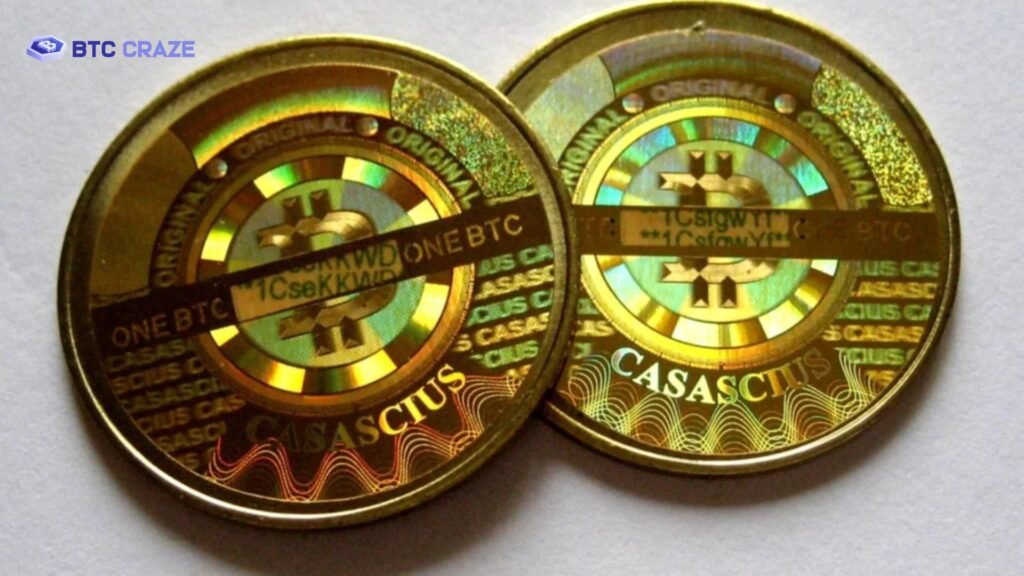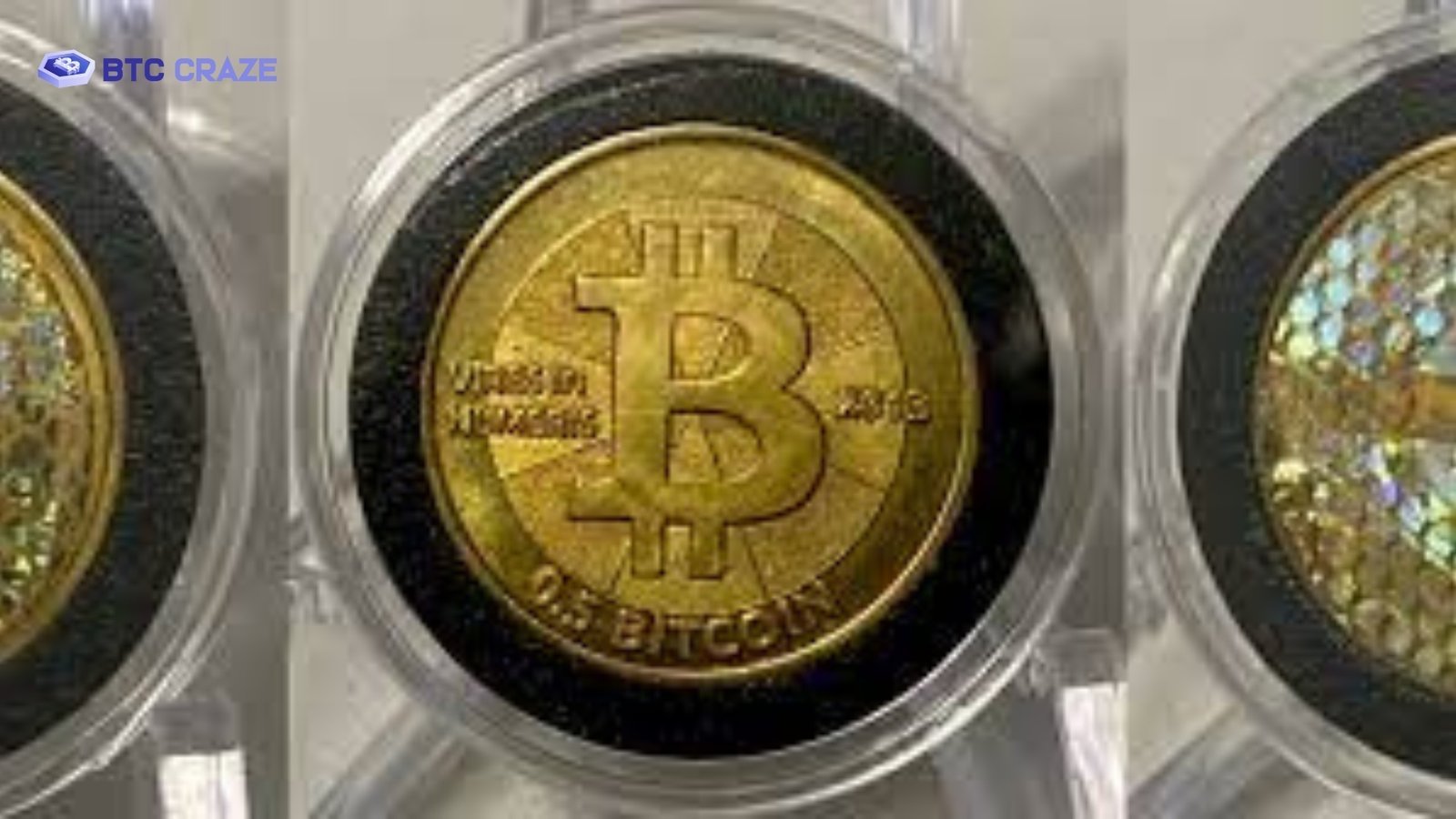When Bitcoin first emerged, the notion of a tangible Bitcoin appeared revolutionary because most people hadn’t heard of digital money. Welcome to Casascius. One of the most famous cryptocurrencies in the world, Bitcoin, has finally found a tangible form. In 2011, Mike Caldwell established Casascius. These coins provide a physical representation of a digital asset, bridging the gap between the two worlds of digital and physical money.
Casascius Bitcoins have a special position in the annals of cryptocurrency despite their brief production run. Their intrinsic value in Bitcoin, rarity, and significance in the early crypto environment have made them highly sought after by collectors and Bitcoin enthusiasts. Casascius Bitcoins are an interesting part of crypto history, and this essay explores their genesis, history, appeal, and legacy while answering some common questions.
The History of Casascius Bitcoin
The software programmer Mike Caldwell of Utah, USA, launched Casascius Bitcoins in 2011. Cunningly combining Caldwell’s name with “satoshi,” the smallest unit of Bitcoin, the moniker “Casascius” was chosen. He came up with a brilliant yet straightforward concept: make Bitcoin physical so people could grip it, feel its texture, and save it in a physical form.
The quantity contained in each Casascius Bitcoin was predetermined and ranged from 0.1 BTC to 1,000 BTC. These coins were highly collectable and valuable due to their composition, which varied from brass to silver to gold, depending on the value. By integrating Bitcoin, these items became even more distinctive. An unchangeable hologram sticker safeguarded the inside of each coin, along with the private key and the public Bitcoin address. The owner can access the private key and transfer the Bitcoin within the coin after removing the hologram.
The Appeal of Physical Bitcoin
Casascius Bitcoins provided a tangible alternative to digital currency when the idea was foreign to many. Data stored on a blockchain is the only physical representation of Bitcoin, and it has always been this way. The concept of “holding” Bitcoin in a physical thing provided reassurance to new users, especially those accustomed to actual currency. Casascius Bitcoins allowed people to store and trade Bitcoin physically without the hassle of complicated digital wallets or exchanges.

In addition, collectors were drawn to Casascius Bitcoins because of their restricted manufacture and meticulous craftsmanship. A part of the coins’ appeal was their monetary worth, which may be brass, silver, or gold. Several investors bought them for their value as a medium of exchange and a historical remembrance of Bitcoin’s infancy.
Casascius Coins and the Rise of Bitcoin Value
The original introduction of Casascius Bitcoins occurred when Bitcoin was in its early stages, and each coin was worth only a few dollars. The value of these real coins increased in tandem with the meteoric rise in popularity and price of Bitcoin in the years that followed. There were numerous instances where the hologram’s collectable value outweighed the Bitcoin it contained.
Due to their rarity and high collecting value, many Casascius Bitcoins have not been peeled as of 2024. In addition to the meteoric growth in the Bitcoin they hold, they have become valuable artefacts of the cryptocurrency’s infancy, commanding a premium price for their rarity and historical significance.
Regulatory Pressure and the End of Production
Concerned that Caldwell did not have the proper authorization to transport funds by physically loading things with Bitcoin, FinCEN officials from the United States expressed their concerns about the coins in 2013.
This legislative roadblock is the reason why Caldwell stopped making loaded Casascius Bitcoins. He persisted in selling “empty” coins—those lacking Bitcoin—even though the original, loaded coins continued to have strong demand. Regulatory concerns were an early example of how the emergence of cryptocurrencies ran counter to conventional financial regulation, drawing attention to a broader question about how governments would view and manage physical forms of digital currency.
The Legacy of Casascius Bitcoin
The Casascius Bitcoin brand continues to thrive despite the discontinuation of the cryptocurrency itself. Collectors value these items because of their iconic status in Bitcoin’s early history. Casascius Bitcoins are valuable as a collectable and a teaching tool because they demonstrate the possibility of creating a physical form for cryptocurrency. They illustrate the first fervour surrounding Bitcoin during its nascent and experimental stages.
Also Read: Is Mining Bitcoin Illegal? Understanding the Rules Around the World
Conclusion
The Casascius Bitcoins are an intriguing example of how the virtual realm of cryptocurrencies. These coins are a window into Bitcoin’s formative years. When experimentation was rampant and the fate of digital currencies was up in the air. The Casascius Collectors, enthusiasts, and historians hold bitcoins in high regard as emblematic objects that symbolize the potential of bitcoin.
FAQs
1. What exactly is a Casascius Bitcoin?
Physical coins with predetermined Bitcoin values are known as Casascius Bitcoins. A tamper-evident hologram conceals the private key, while the exterior displays a public Bitcoin address. If a Bitcoin owner has their private key, they can use it to access their Bitcoin at the public address. Mike Caldwell invented Casascius Bitcoins in 2011, however they are no longer being produced.
2. How do Casascius Bitcoins work?
The Casascius Bitcoins are a tangible way to store Bitcoin. Utilizing the public address that appears on the surface of the coin, one can ascertain their Bitcoin balance on the blockchain. Underneath the hologram is the private key, which is necessary to spend or access cryptocurrency. If you peel off the hologram, you can still transfer the Bitcoin within, but the coin itself will no longer have its collectible “unpeeled” status.
3. Are Casascius Bitcoins still available?
Nevertheless, Casascius The creation of new Bitcoins is not possible, however existing Bitcoins can be bought and sold on secondary markets.. Rare coins, especially unpeeled ones, fetch a premium price, and that’s before you even consider the skyrocketing value of Bitcoin. Many of them are not only digital assets, but also highly prized memorabilia.
4. Why are unpeeled Casascius Bitcoins worth more?
Raw Casascius The value of Bitcoins has grown because their holograms have never been broken, indicating that the Bitcoins contained within the coin have never been handled or removed. The rarity and undamaged condition of these coins increase their collection value. Investors and collectors alike covet Bitcoins for their monetary worth, historical significance, and extreme rarity.
5. Why did Casascius Bitcoin production stop?
The United States Financial Crimes Enforcement Network (FinCEN) expressed regulatory concerns in 2013, which led to the cessation of production of loaded Casascius Bitcoins. Mike Caldwell lacked the requisite special license, which FinCEN deemed necessary because the process of inserting Bitcoin into actual coins constituted money transmission. Consequently, Caldwell stopped making coins with any kind of load but kept selling ones without.


